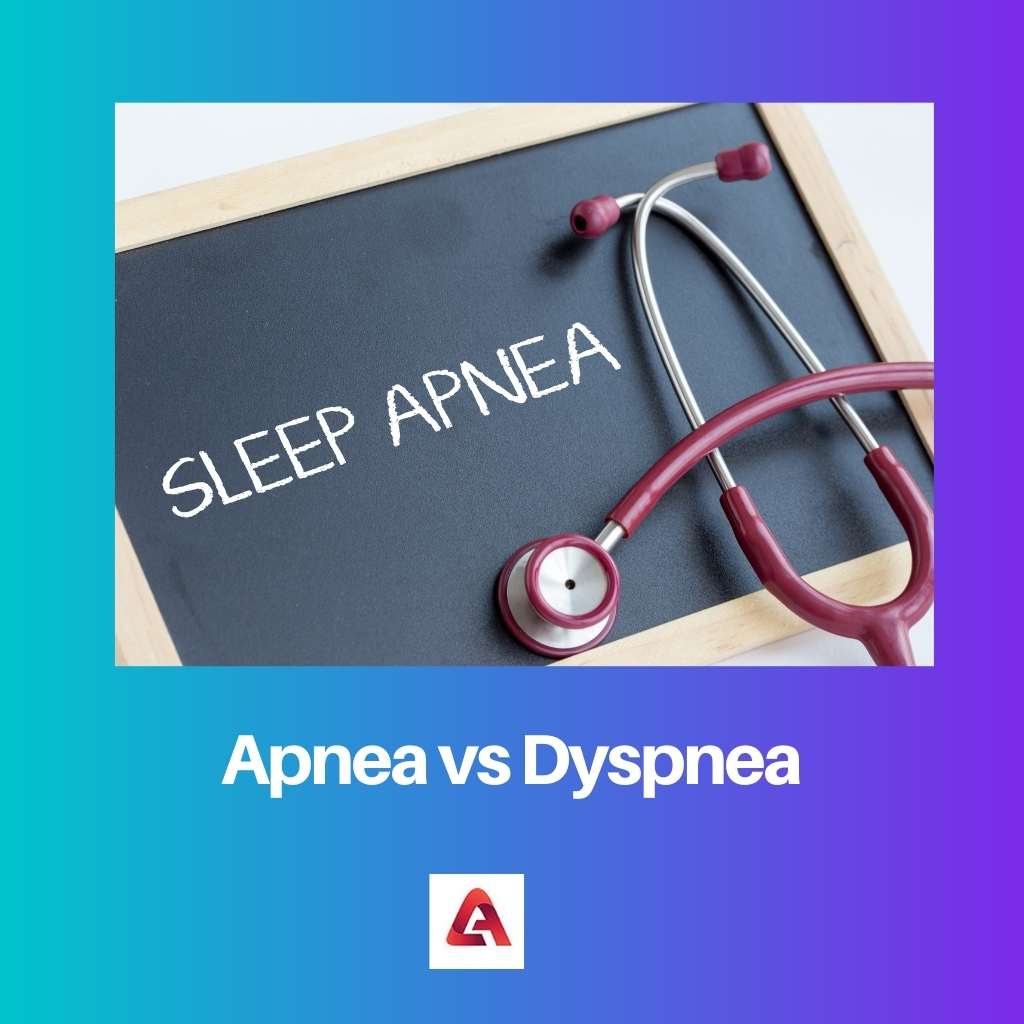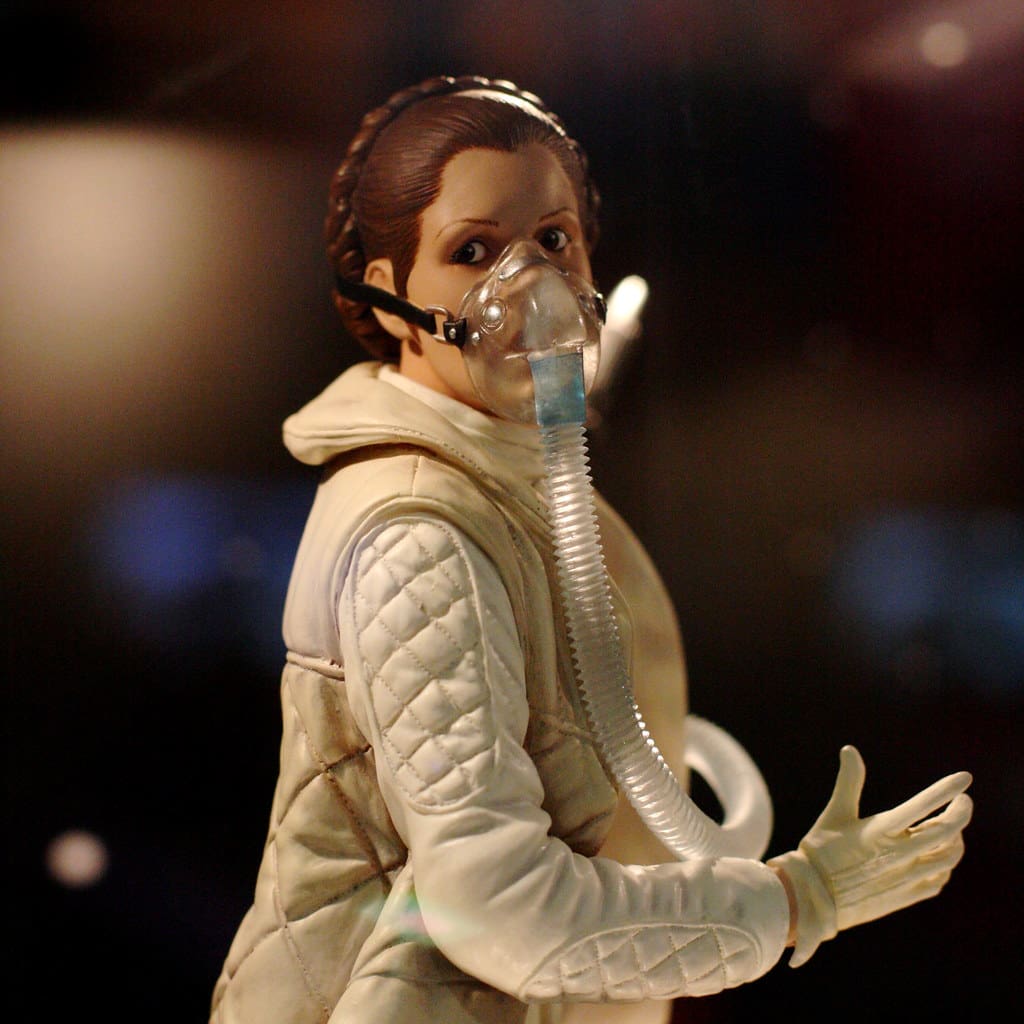Breathing is an essential function of our body and having problems in breathing causes so much difficulty in our lives. If it is not cured at early stages, it may also lead to complicated problems.
There are many types of breathing problems but two which occurs more frequently are apnea and dyspnea.
Key Takeaways
- Apnea is a temporary cessation of breathing, while dyspnea is the sensation of shortness of breath or difficulty breathing.
- Sleep apnea is a common form of apnea characterized by repeated pauses in breathing during sleep. In contrast, dyspnea can be a symptom of various medical conditions, such as asthma, heart failure, or lung diseases.
- Apnea treatment may involve lifestyle changes, continuous positive airway pressure (CPAP) therapy, or surgery. In contrast, dyspnea treatment addresses the underlying cause and may include medications, oxygen therapy, or pulmonary rehabilitation.
Apnea vs Dyspnea
Apnea refers to a temporary cessation or pause in breathing. It can be caused by a number of factors, such as airway obstruction, respiratory muscle weakness, etc. Dyspnea is the difficulty or discomfort in breathing, and can be a symptom of a variety of respiratory or cardiovascular conditions.

Apnea is the cessation of breathing only during sleeping time. When you have apnea, the movement in the lungs muscle will stop and the volume of the lungs remains the same.
The flow or exchange of gases with the outside environment gets disrupted or stopped. Hence, lungs will cease to perform their function of breathing.
Dyspnea is a difficulty in breathing that can occur at any time. Most of the time, it is caused as a reaction to the high level of carbon dioxide intake.
In cases of jogging or weight lighting, it results in overexertion and leads to an elevated intake of carbon dioxide. Hence, it creates difficulty or trouble in the process of breathing.
Comparison Table
| Parameters of Comparison | Apnea | Dyspnea |
|---|---|---|
| Definition | It is the complete cessation of breathing. | It is the difficulty or interruption in breathing |
| Time | Occurs only during sleeping time. | Occurs anytime, day or night. |
| Causes | Caused due to sleep apnea normally but can also be caused due to other neurological problems. | Caused due to respiratory or heart diseases, overexertion, and anxiety problems, etc. |
| Symptoms | Loss of chest movements, choking during sleeping, and loud snoring, etc. | Shortness of breathing, suffocation, reduced blood pressure, and excessive sweating, etc. |
| Interruption of breathing | Apnea causes complete interruption of breathing. | Dyspnea causes partial interruption of breathing. |
What is Apnea?
Apnea is the complete cessation of breathing during sleep. It is commonly caused by sleep apnea and neurological problems.
During an apnea, the movement of muscles in the lungs ceases and the process of exchange of gases oxygen and carbon oxide from the outside environment ceases. Hence, it stops the person from breathing during sleeping times.
The symptoms of Apnea are loss of chest movements, choking, loud snoring during sleep and suffocation, etc.
It is highly advisable to visit the doctor and get it cured in the early stages as these types of problems need surgical solutions and hardly could be cured at home.
Apnea can also be caused due to heightened feelings of emotions like loud or breathless crying. It is a short-time apnea and can be cured easily.
Generally, apnea will be first diagnosed in childhood and can be cured by visiting the ENT specialist. Apnea can also be caused due to stress and anxiety which leads to the malfunction of the lungs.
Normally, a healthy person cannot store much oxygen inside the body and apnea leads to the lower circulation of oxygen in our body as the function of exchange of gases will be ceased to perform by the lungs.
Hence, it is highly advisable to visit the doctor and get it cured in the early stages of feeling the symptoms of apnea.

What is Dyspnea?
Dyspnea is the shortage or partial interruption in breathing at any time, day or night. It is commonly caused due to respiratory or heart diseases and even anxiety problems.
But sometimes, it may also be caused due to overexertion or elevated intake of carbon dioxide in cases of jogging or lifting weights. Hence, it causes trouble or difficulty in the breathing process.
The symptoms of Dyspnea are shortness of breathing, suffocation, sudden drop in the levels of blood pressure, excessive sweating, and trembling of bodies, etc.
Since dyspnea is caused due to internal problems in our body, many scientific or laboratories test had to be done to confirm dyspnea.
In addition to this, many other tests will be done to find out the cause of dyspnea in order to avoid this problem in the future.
The treatment of dyspnea will depend upon the causes that lead to dyspnea. However, one common cure could be a supply of oxygen as dyspnea means the shortness of oxygen in our body.
Supply of oxygen is more like basic first-aid to dyspnea and the additional treatment will be carried out depending on the severity of the disease.
Hence, it is highly advisable to visit the doctor and get it cured in the early stages when you feel the symptoms of dyspnea.
Main Differences Between Apnea and Dyspnea
- The difference between apnea and dyspnea is that apnea leads to the complete cessation of breathing while dyspnea leads to the partial interruption of breathing.
- Apnea occurs only while sleeping whereas dyspnea can occur at any time.
- Dyspnea is caused due to neurological problems whereas apnea is caused due to respiratory or cardiac problems.
- There are variations in apnea which are Obstructive Sleep Apnea (OSA), Central Sleep Apnea Mixed Types whereas there are no variations in dyspnea.
- Apnea is the complete interruption of the breathing process up to 10 seconds or more during sleeping whereas dyspnea is the difficulty in breathing at any time.

The treatment options given for both apnea and dyspnea are informative, but this article should also include more statistical data.
The in-depth discussion of the symptoms of apnea and dyspnea enhanced my understanding of the conditions and their implications.
This was a good read, but I wish there were more descriptions on chronic apnea and dyspnea.
The article was a bit too verbose, and should have stated the main points in a more concise manner.
The detailed comparison table explaining the differences between apnea and dyspnea was very helpful. It made it so much easier to understand.
I could not find any humor in the article as I was hoping for. It would have made the article a bit less rigid.
I don’t think an article about such serious medical conditions should have humor injected into it.
Agreed. The serious tone is necessary to maintain the credibility of the information presented.